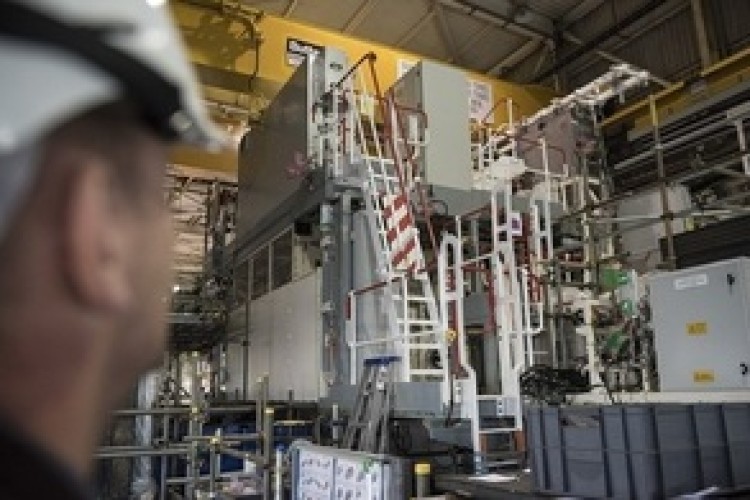The £100m silo emptying plant will scoop radioactive waste out of the Magnox swarf storage silo.
The 1960s storage facility contains 10,000 cubic metres of intermediate level nuclear waste.
This is the first of three machines that will sit on rails on top of the silo’s 22 vertical waste compartments. Each compartment is big enough to accommodate six double decker buses stacked three high.
Once in operation, the emptying machines will be manoeuvred into place over the top of each compartment to scoop out their contents. The material will then be packed into nuclear skips and sent to modern waste stores at Sellafield, pending final disposal in the UK’s geological disposal facility.
The machines will be ready to start retrieving waste in 2018, taking an estimated 20 to 25 years to complete the task.

Chris Halliwell, head of the Magnox swarf storage silo, said: “This is probably the most complicated and advanced machine ever built at Sellafield. It has about 13,500 different working parts and its design and concept was first drawn up more than 20 years ago. Turning that vision into the machine we have today has been a major challenge for the UK’s advanced manufacturing and nuclear supply chain.”
No plans were drawn up for how waste would be taken out of the building when it was built in the 1960s, which made the engineering more challenging.
The emptying machines were built by NES Ansaldo at its Wolverhampton factory, before being dismantled and sent to Sellafield in 23 separate modules. The modules were then lifted one by one into the silo building and re-assembled in situ.
Chris Halliwell added: “There is no job at Sellafield more important than the one being done by this machine. Emptying the waste from this legacy silo is our number one priority. It has to be reliable because once it starts taking waste out, the contamination inside it would make it very difficult to maintain or repair.”
The silo took waste from nuclear power stations all over the UK until its closure in June 2000. Its contents are chiefly made up of magnesium cladding which was stripped from nuclear fuel rods before they were sent for reprocessing.
Got a story? Email news@theconstructionindex.co.uk



